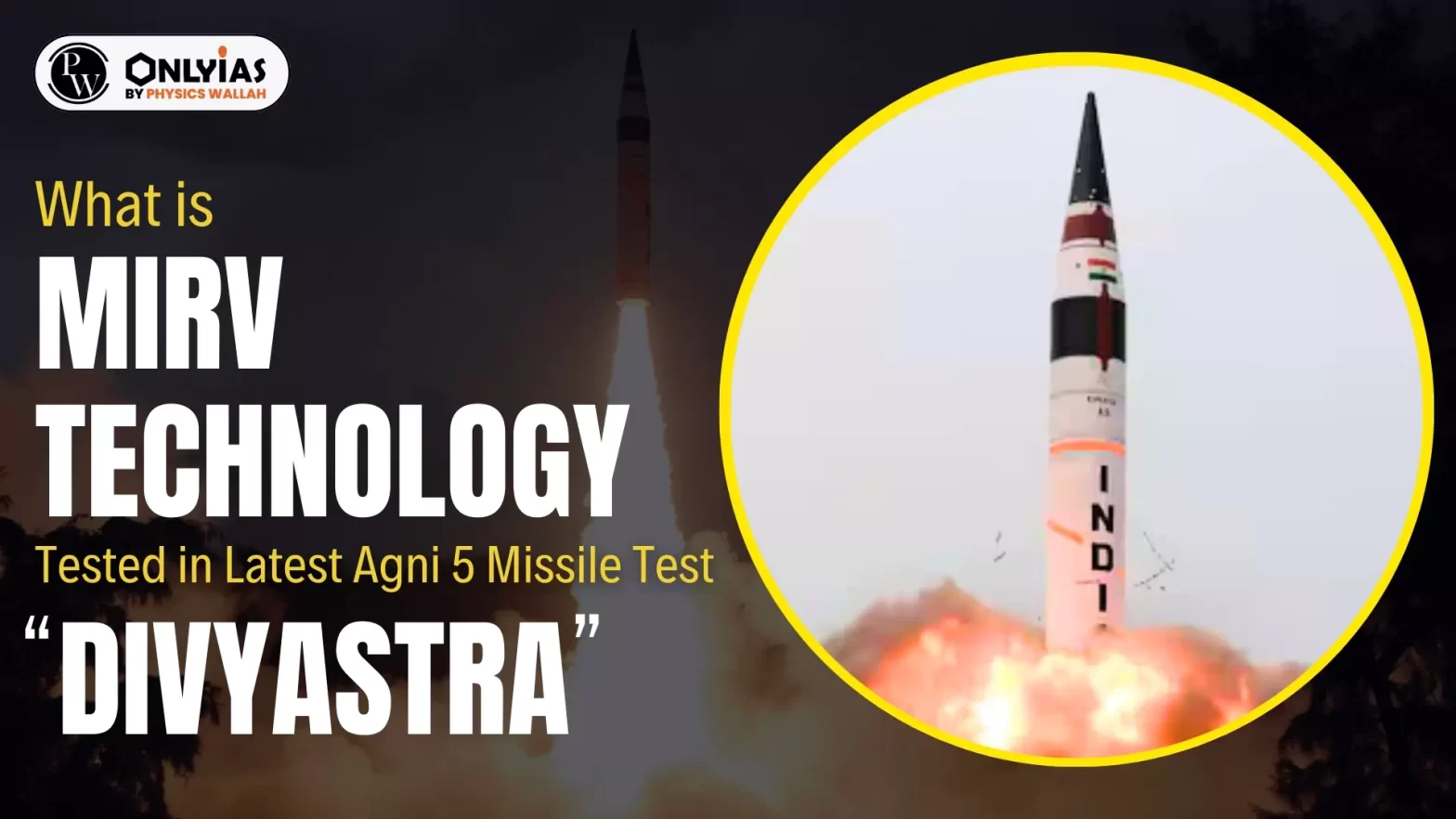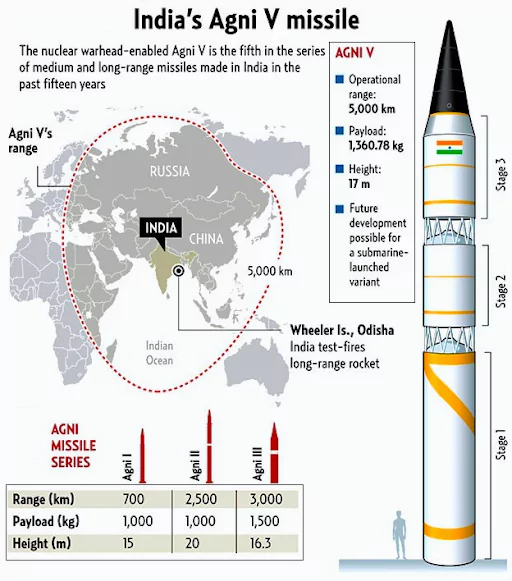![]() 19 Mar 2024
19 Mar 2024

This editorial is based on the news “The MIRV leap that fires up India’s nuclear deterrence” which was published in the Hindu. The Agni 5 ballistic missile test dubbed the “Divyastra”, that was conducted by the Defence Research and Development Organisation (DRDO), is strategically consequential.
| Relevancy for Prelims: Mission Divyastra, DRDO, List Of Indian Missiles, Defence Technology, and ADITI Scheme.
Relevancy for Mains: Indigenisation of Technology and developing new technology |
|---|

India’s successful test of the Agni-5 MIRV missile marks a significant milestone in its journey towards establishing itself as a highly credible nuclear and missile power.
| Prelims PYQ (2023):
Consider the following statements: 1. Ballistic missiles are jet-propelled at subsonic speeds throughout their flights, while cruise missiles are rocketpowered only in the initial phase of flight. 2. Agni-V is a mediumrange supersonic cruise missile, while BrahMos is a solidfuelled intercontinental ballistic missile. Which of the statements given above is/are correct? (a) 1 Only (b) 2 Only (c) Both 1 and 2 (d) Neither 1 nor 2 Ans: (d) |
|---|
| Must Read | |
| NCERT Notes For UPSC | UPSC Daily Current Affairs |
| UPSC Blogs | UPSC Daily Editorials |
| Daily Current Affairs Quiz | Daily Main Answer Writing |
| UPSC Mains Previous Year Papers | UPSC Test Series 2024 |

<div class="new-fform">
</div>